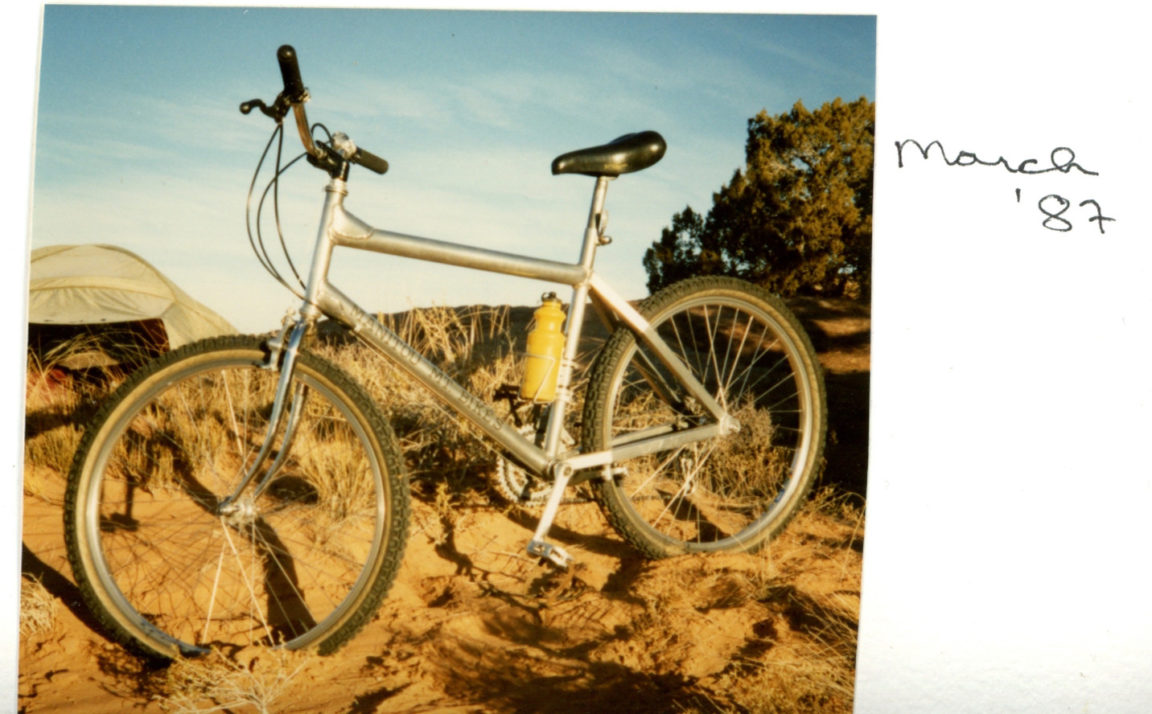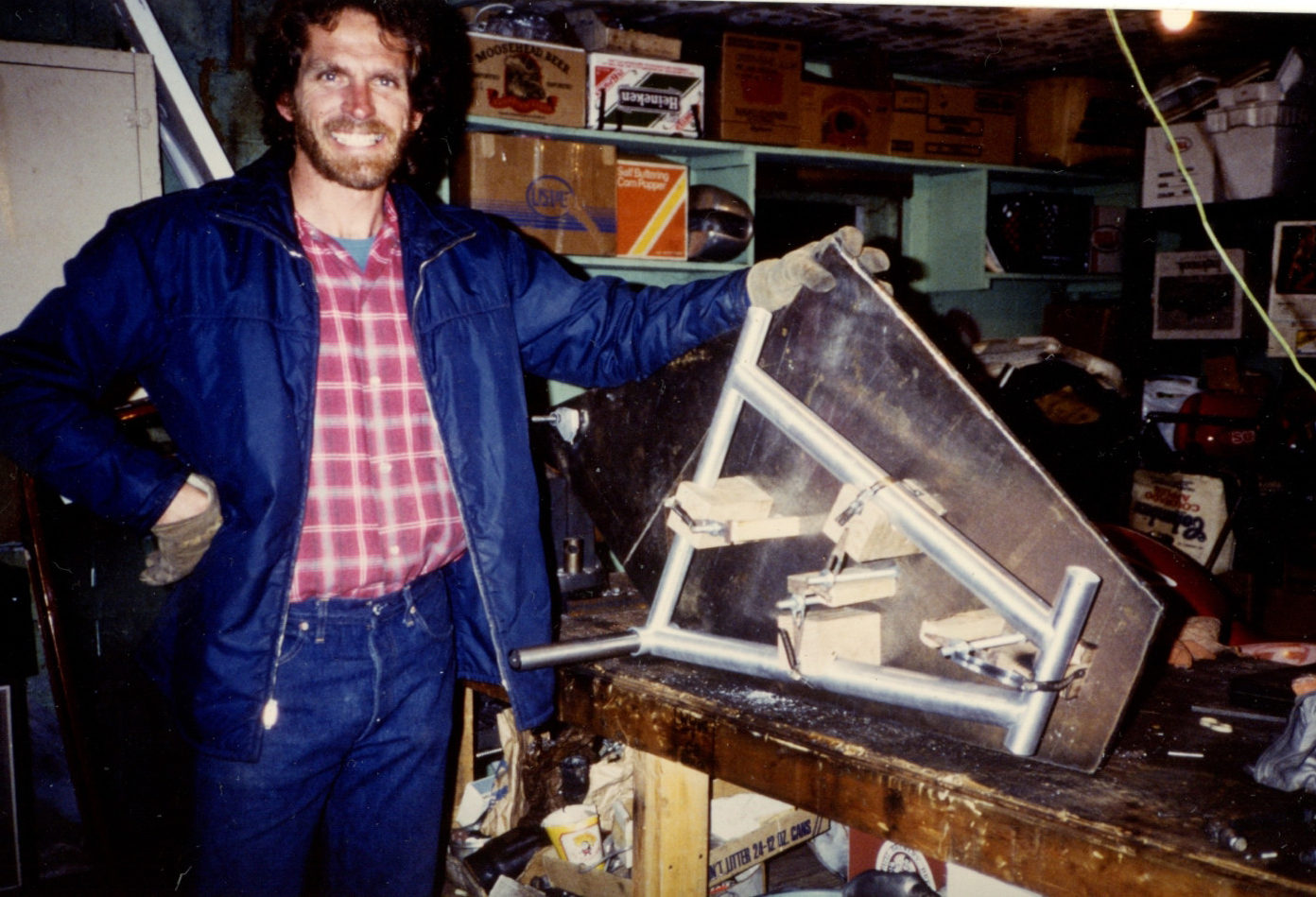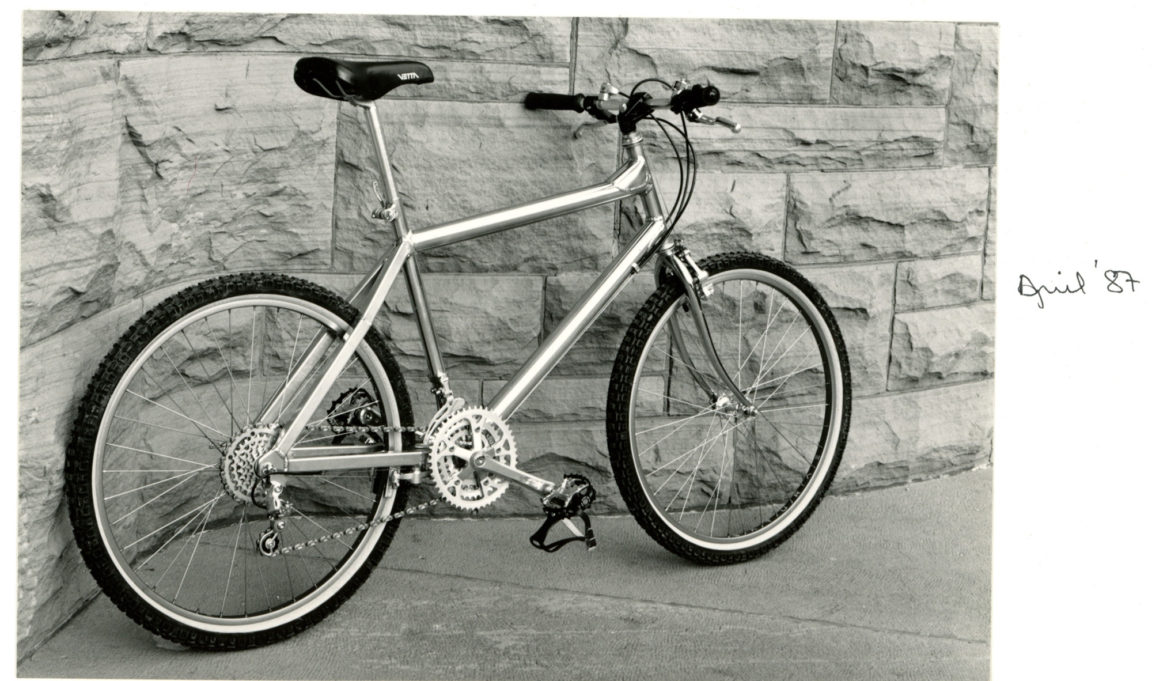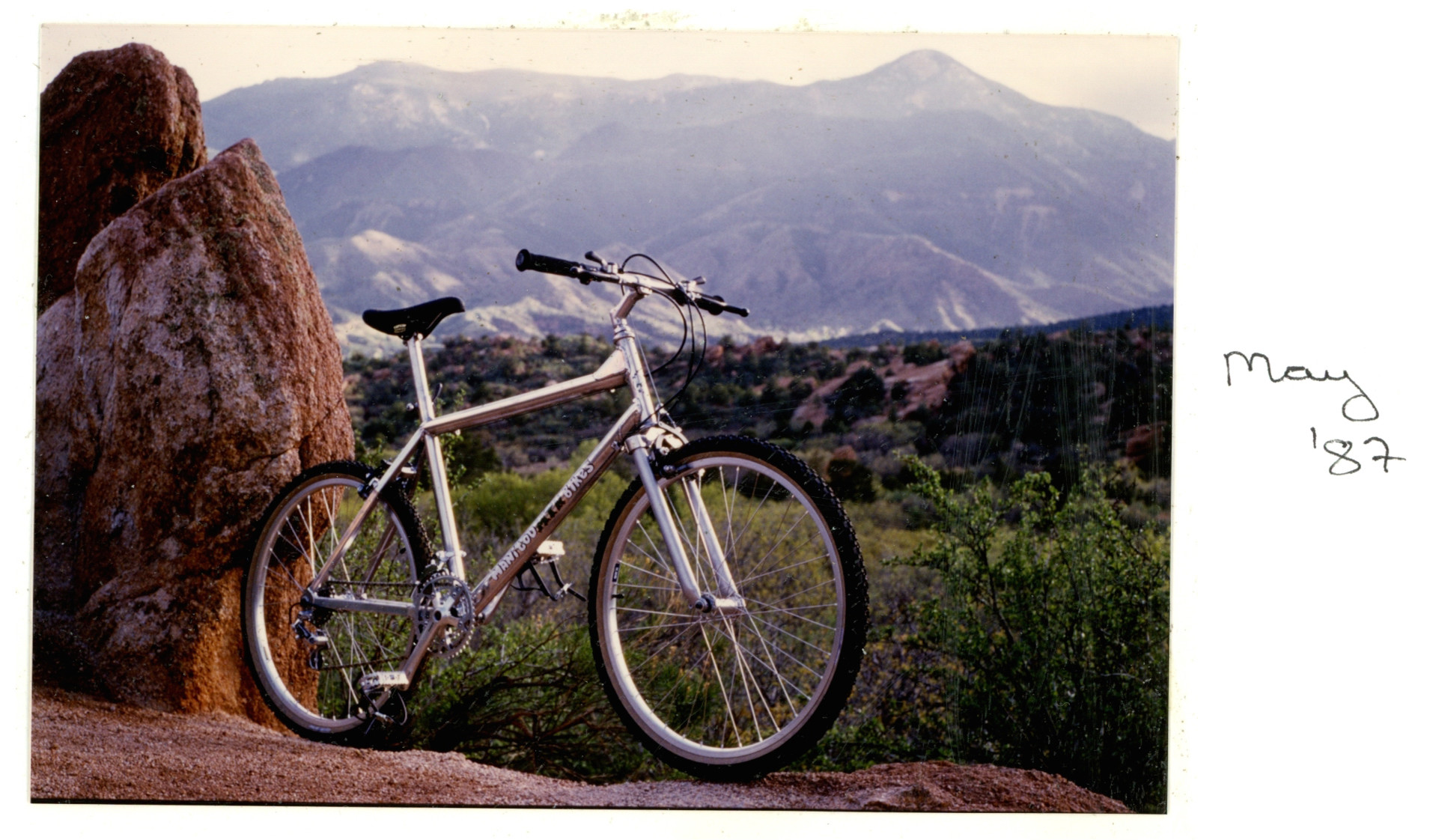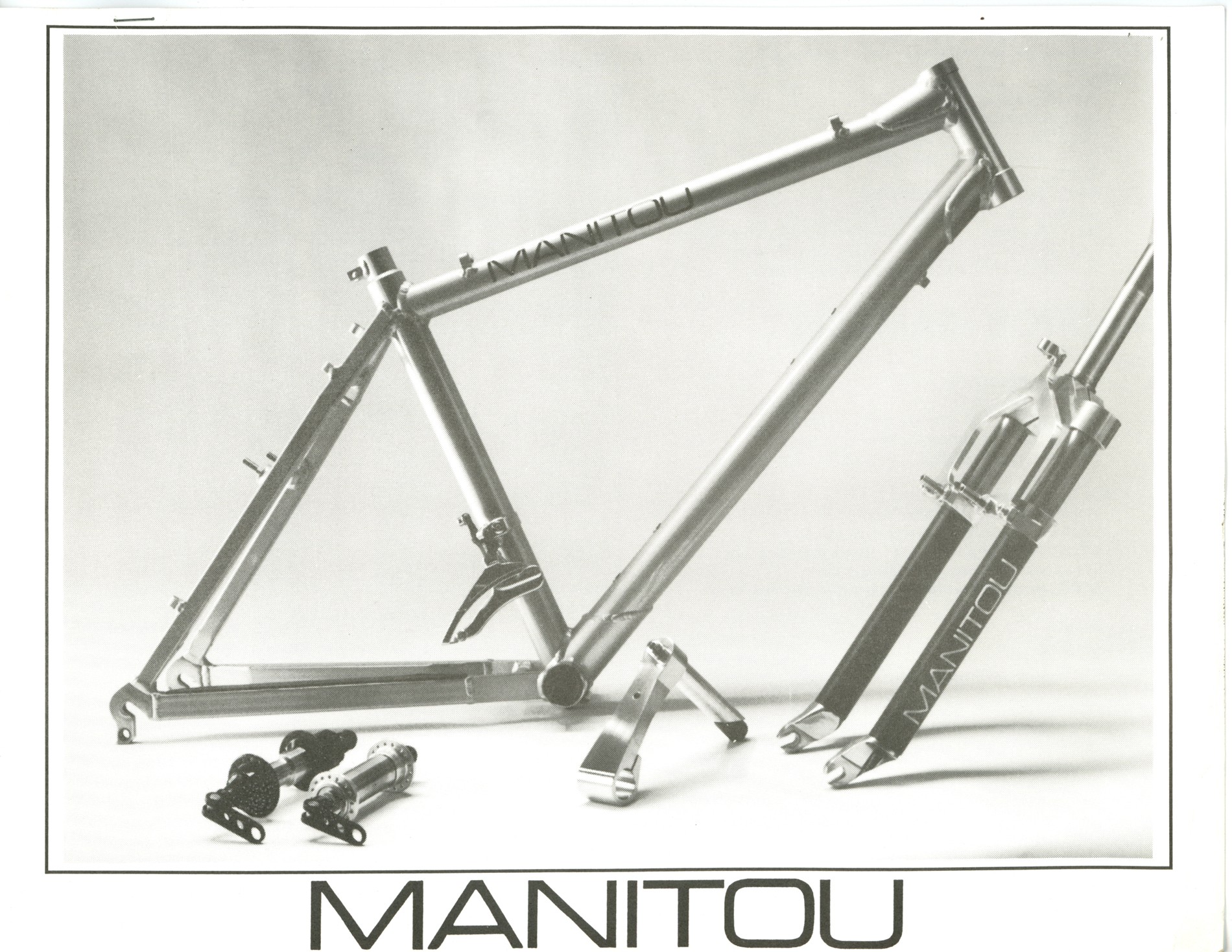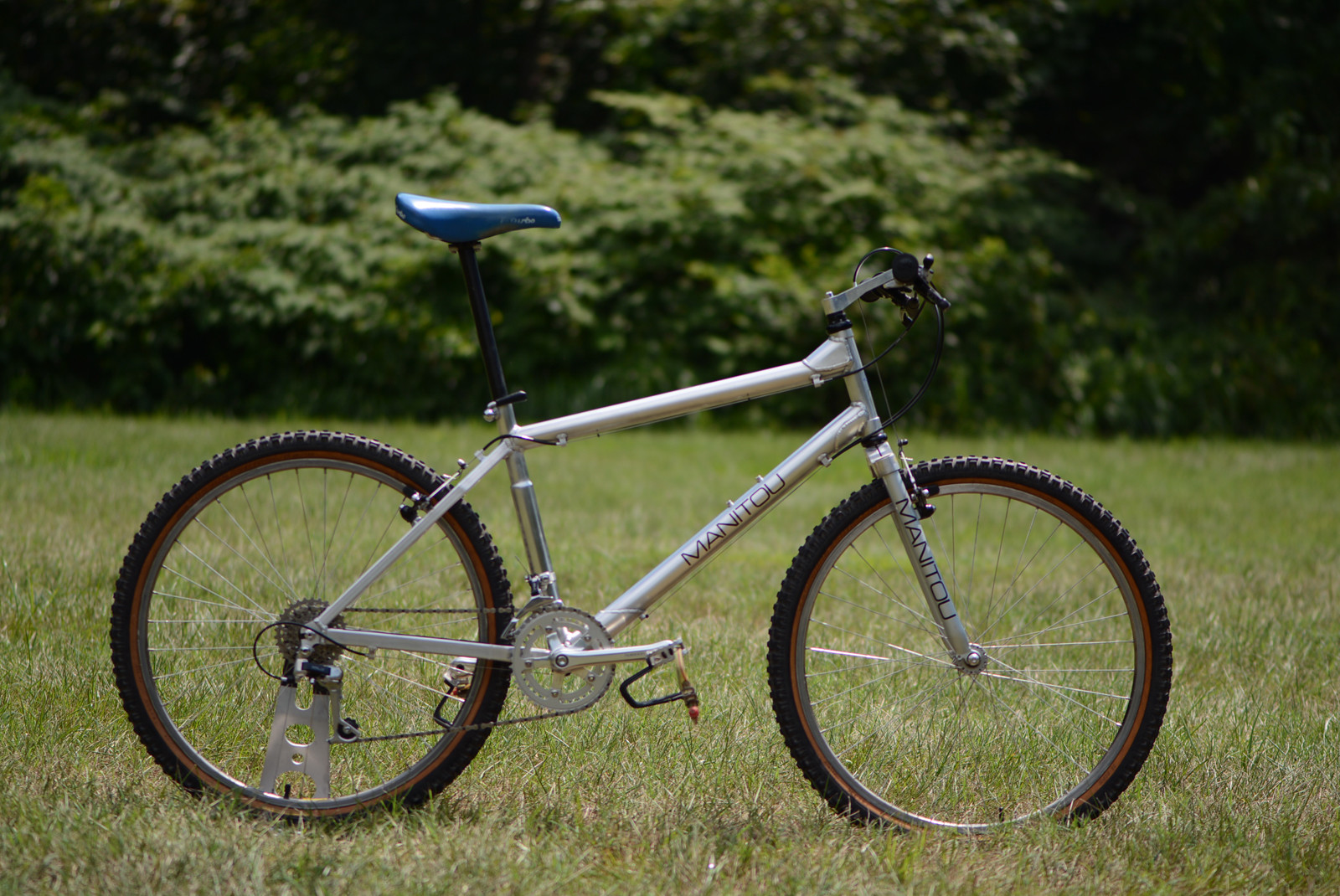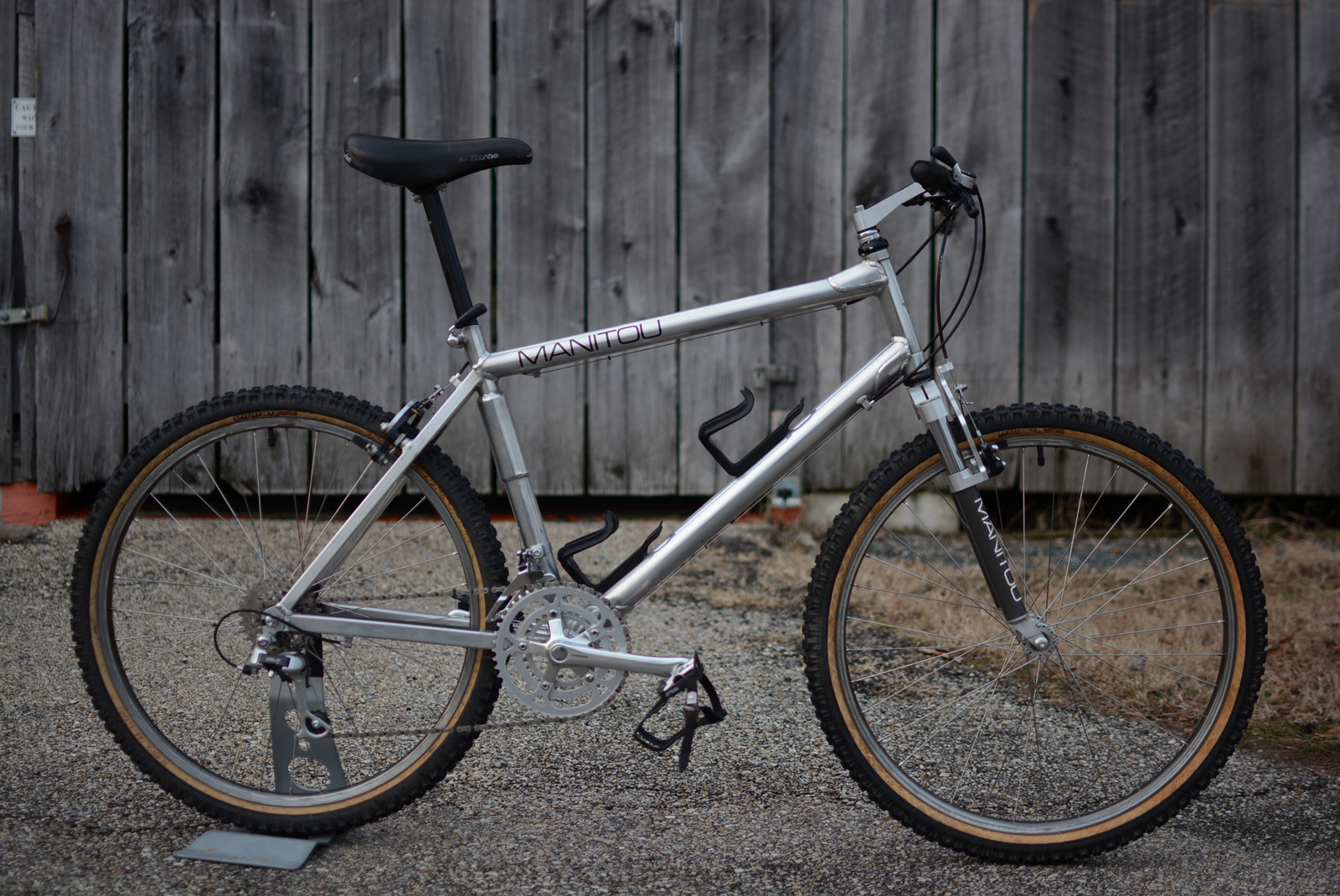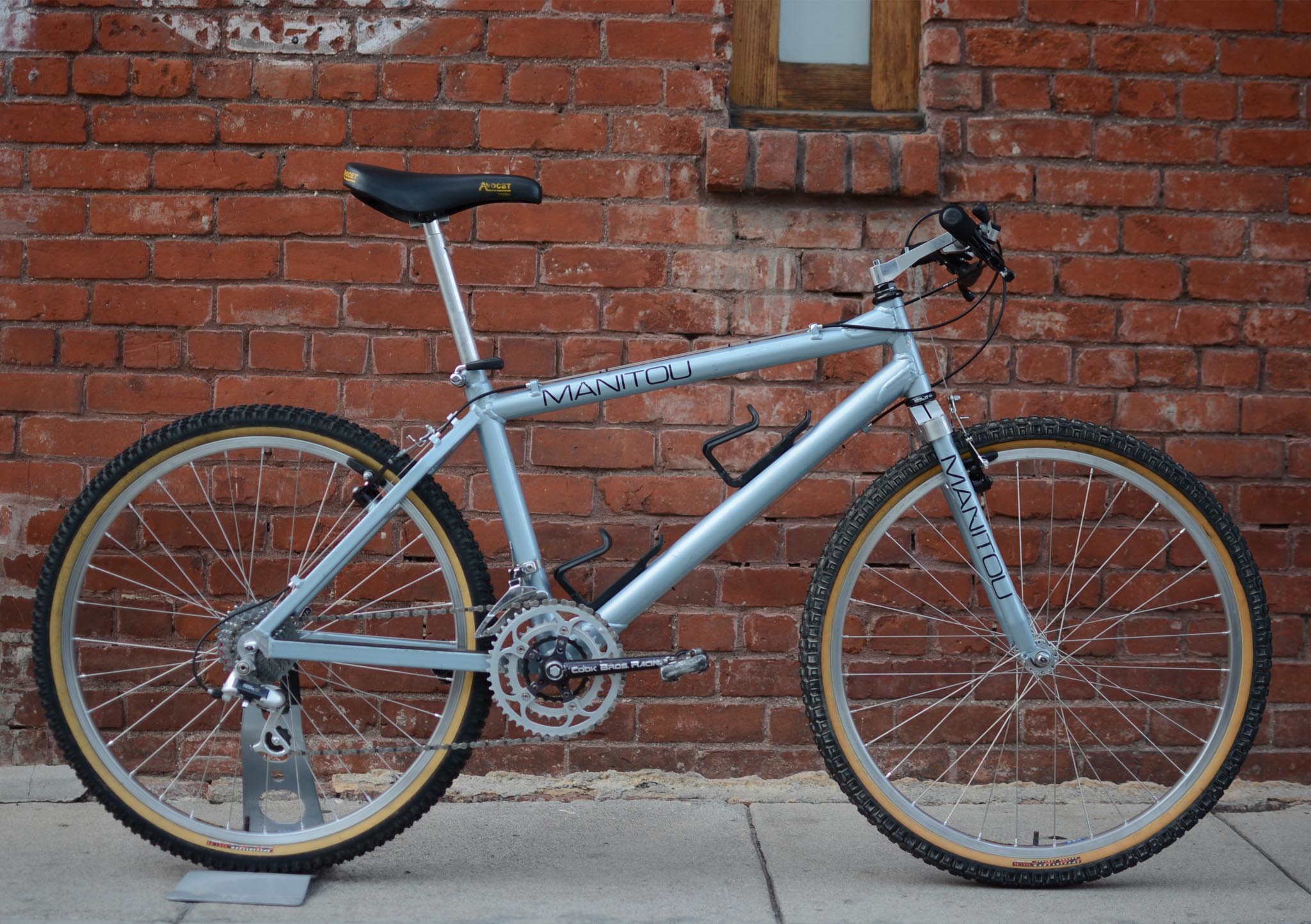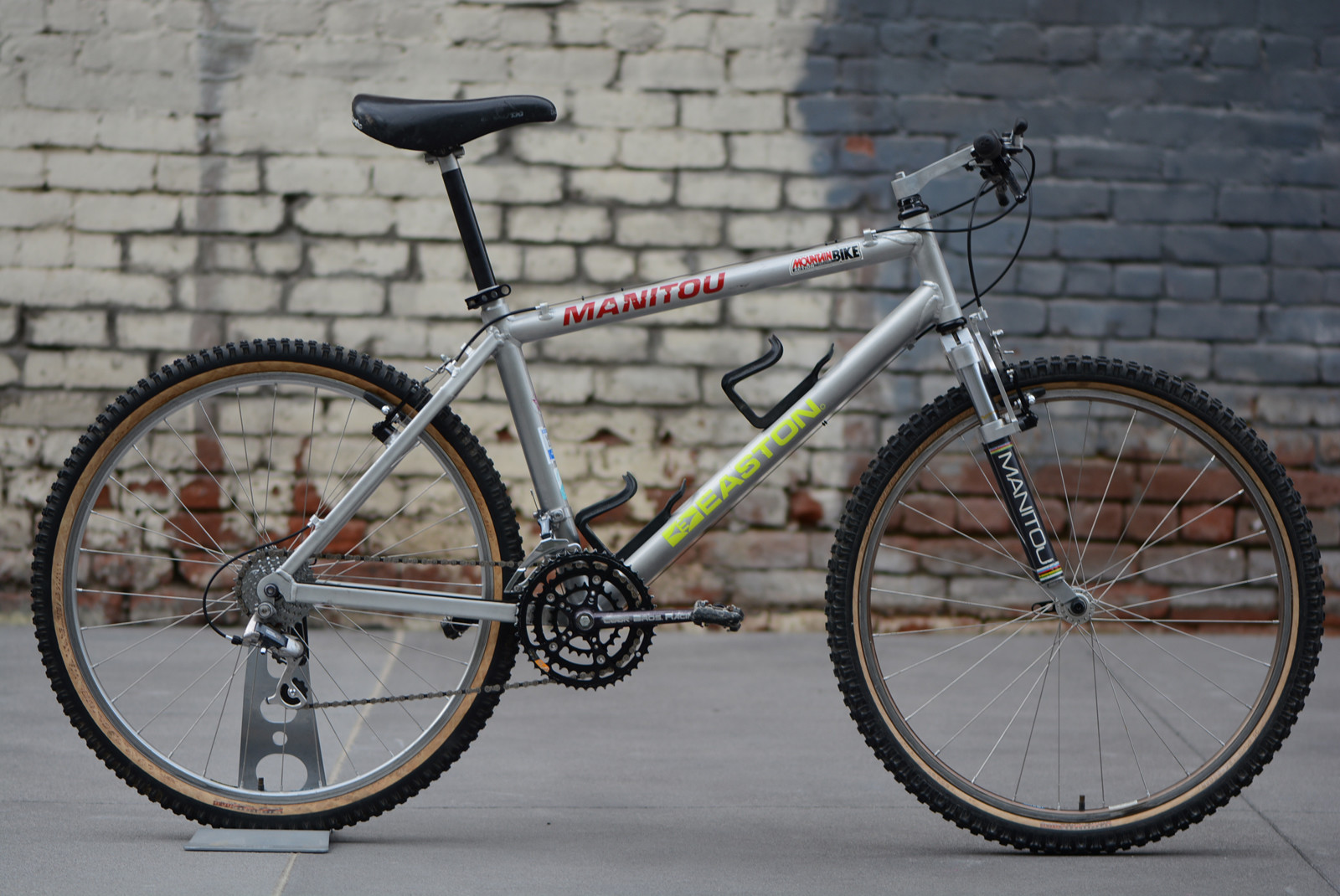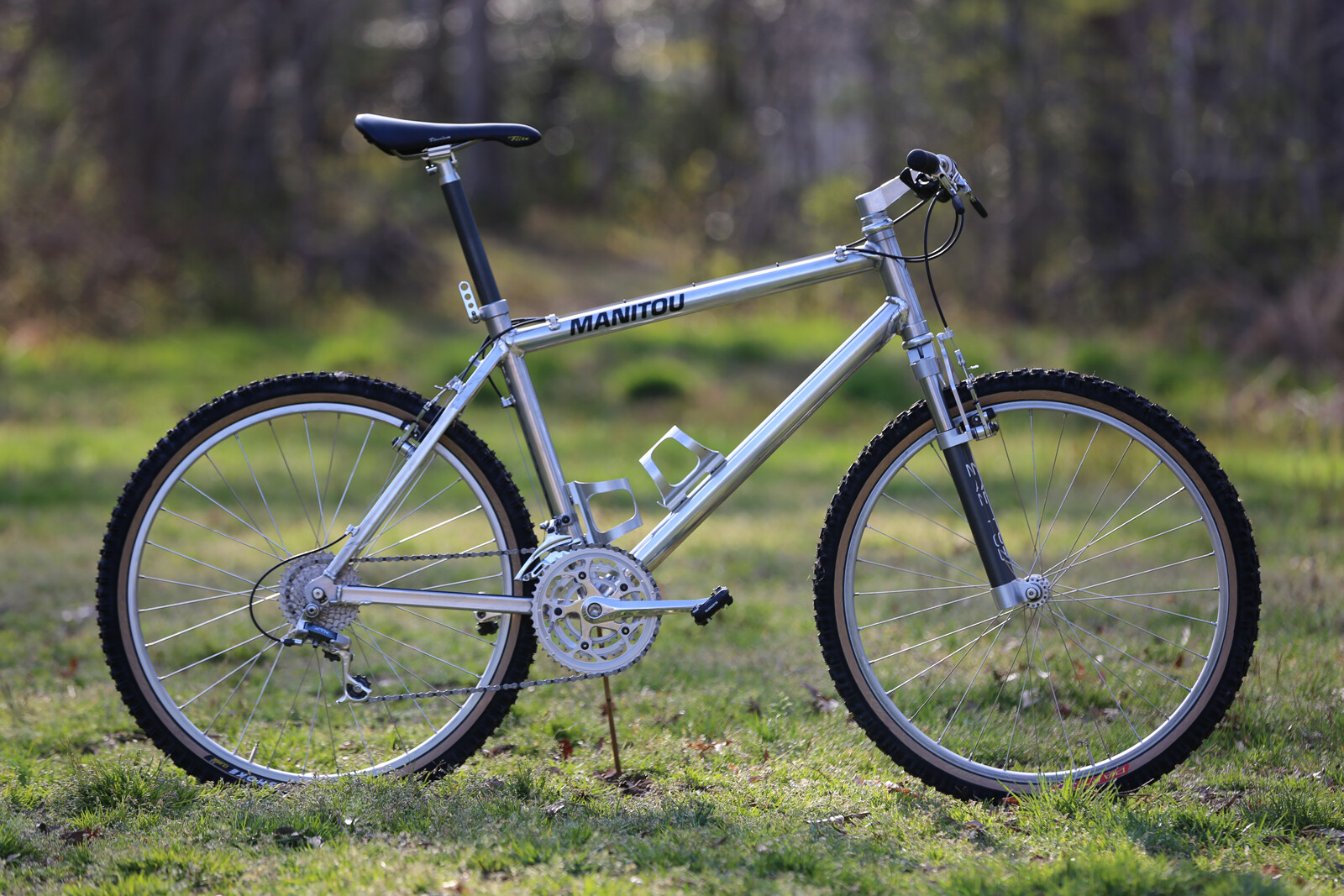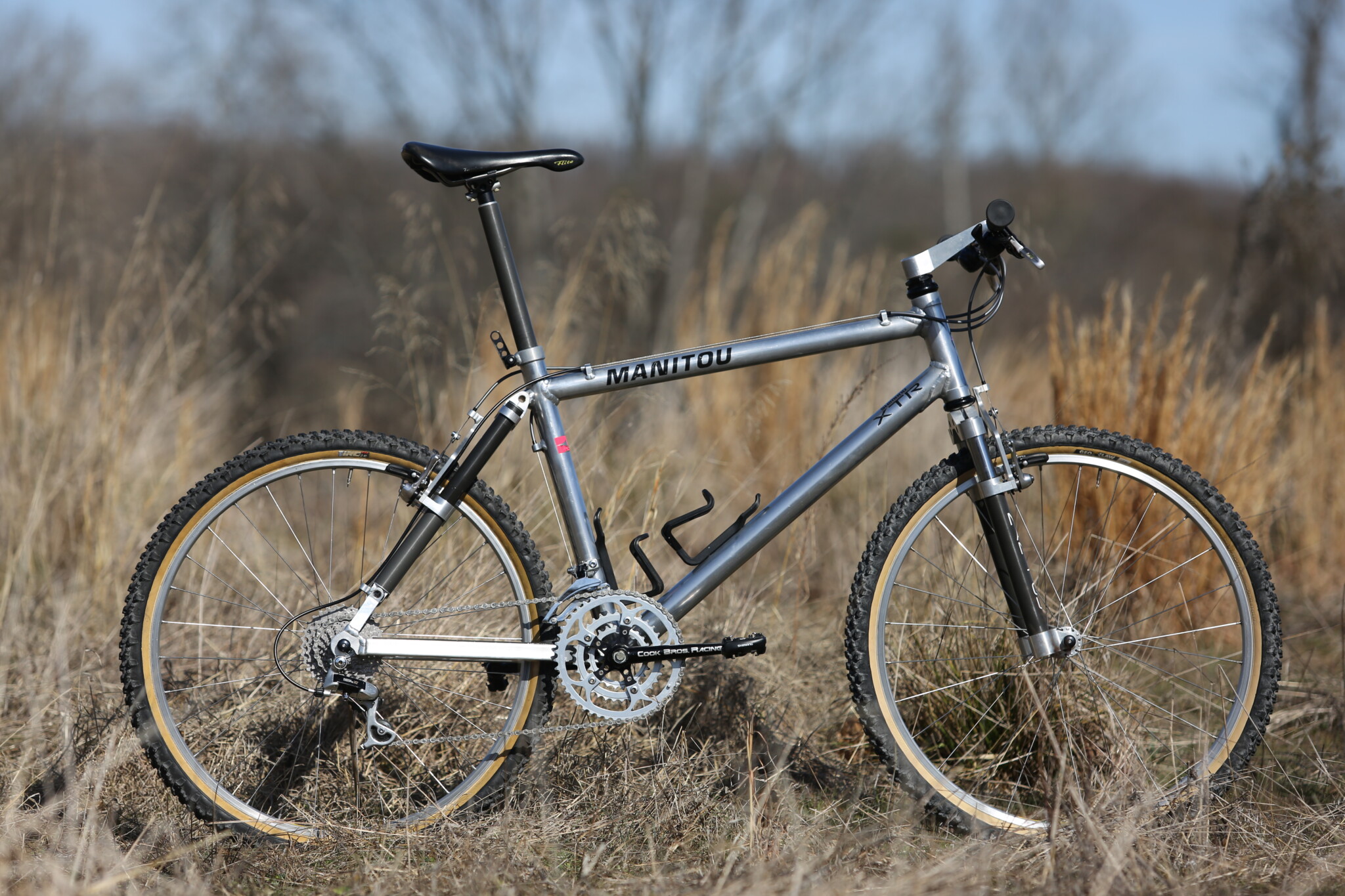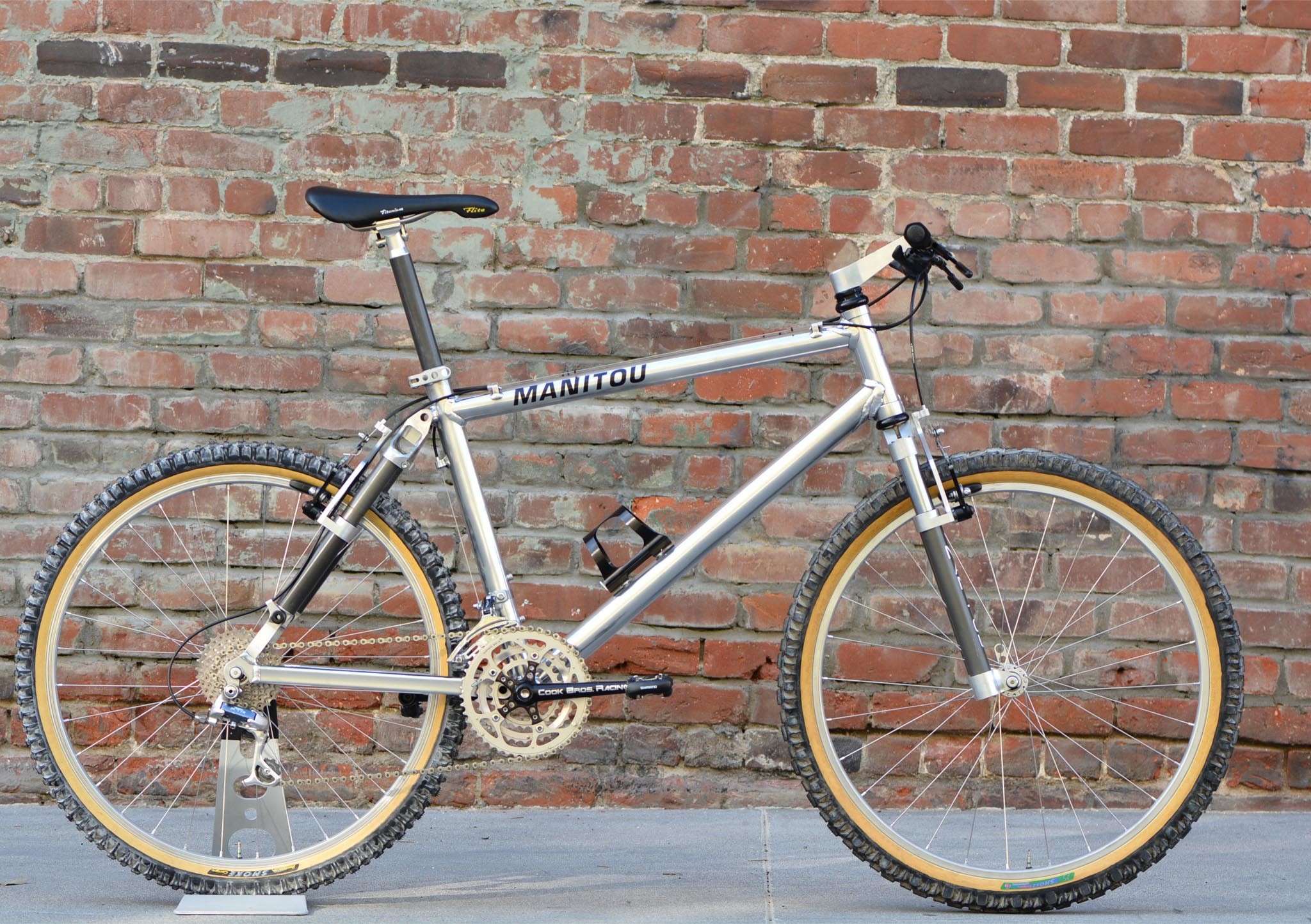Brand history
Doug Bradbury founded Manitou in 1986 and began building Aluminum mountain bikes in his shop in Colorado Springs. While mountain bikes, and even aluminum mountain bikes were not brand new at that time Doug went at it from a slightly different vantage point and applied his background in trials motorcycle riding to develop his own style of bikes. He was trying to get the bike to perform like a motorcycle. He’d ride the bike/motorcycle on the same trails. Kept losing the line on the bikes and so he wanted something stronger that would hold the line and do what it was asked of by the rider.
His first bikes were basic and simple. One of the reasons he decided to build out of Aluminum to maximize stiffness as he didn’t like the flexy steel bikes. However, once the frame got stiff he saw the flex move to other components, wheels particularly. This drove the design of the 115/145mm hubs and 100mm BBs. First BBs came from tandems that used wide BB axles at that time. Offset/asymmetrical rear was to get the dish out of the real wheel so that the chain line would be theoretically correct. Q factor was out the door, but since nobody cared about it, it didn’t really matter.
Getting front derailleurs to work was also difficult. Doug had to machine custom band clamps to get the derailleurs mounted onto 1.5” tubes. Moving to a larger seat tube enable him to move the derailleur further outboard to reach the larger gears.
This setup made for a very responsive bike. This design carried all the way into the late 90s, once suspension came things moved past that point.
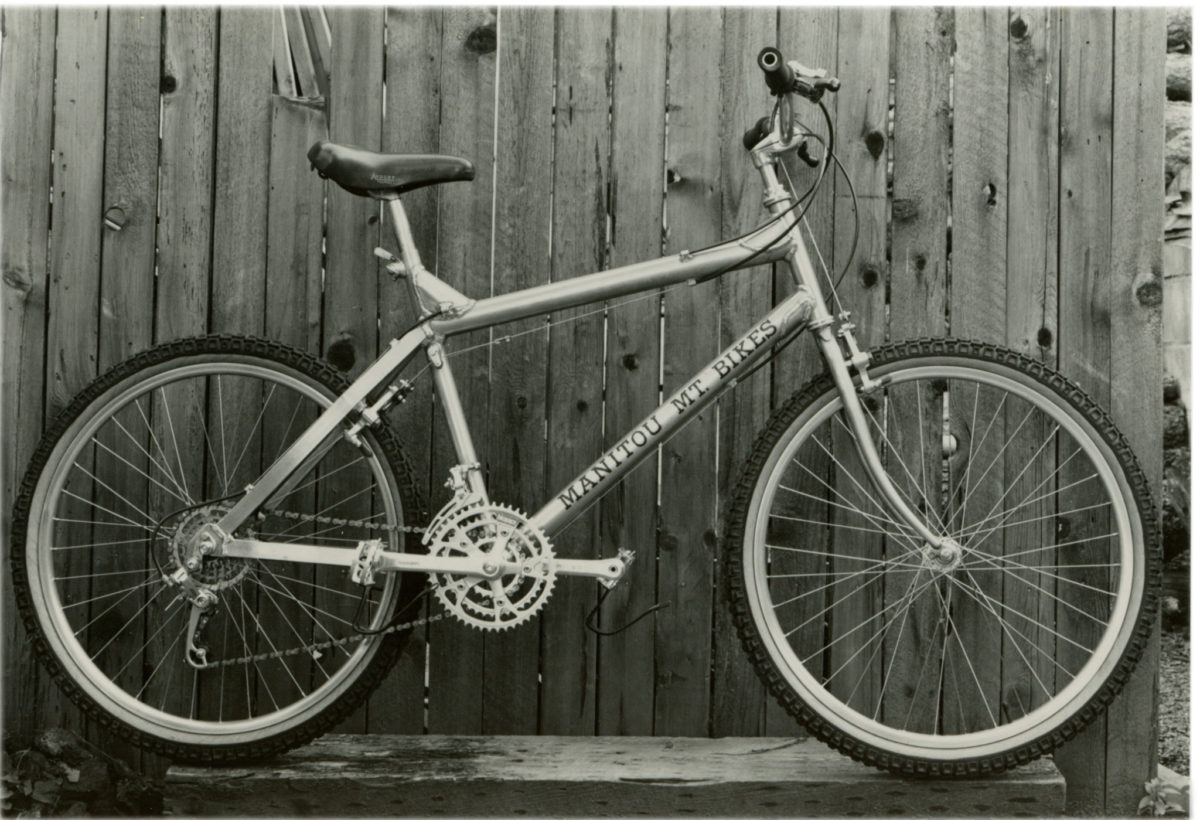
Doug’s first mountain bike, April 1986
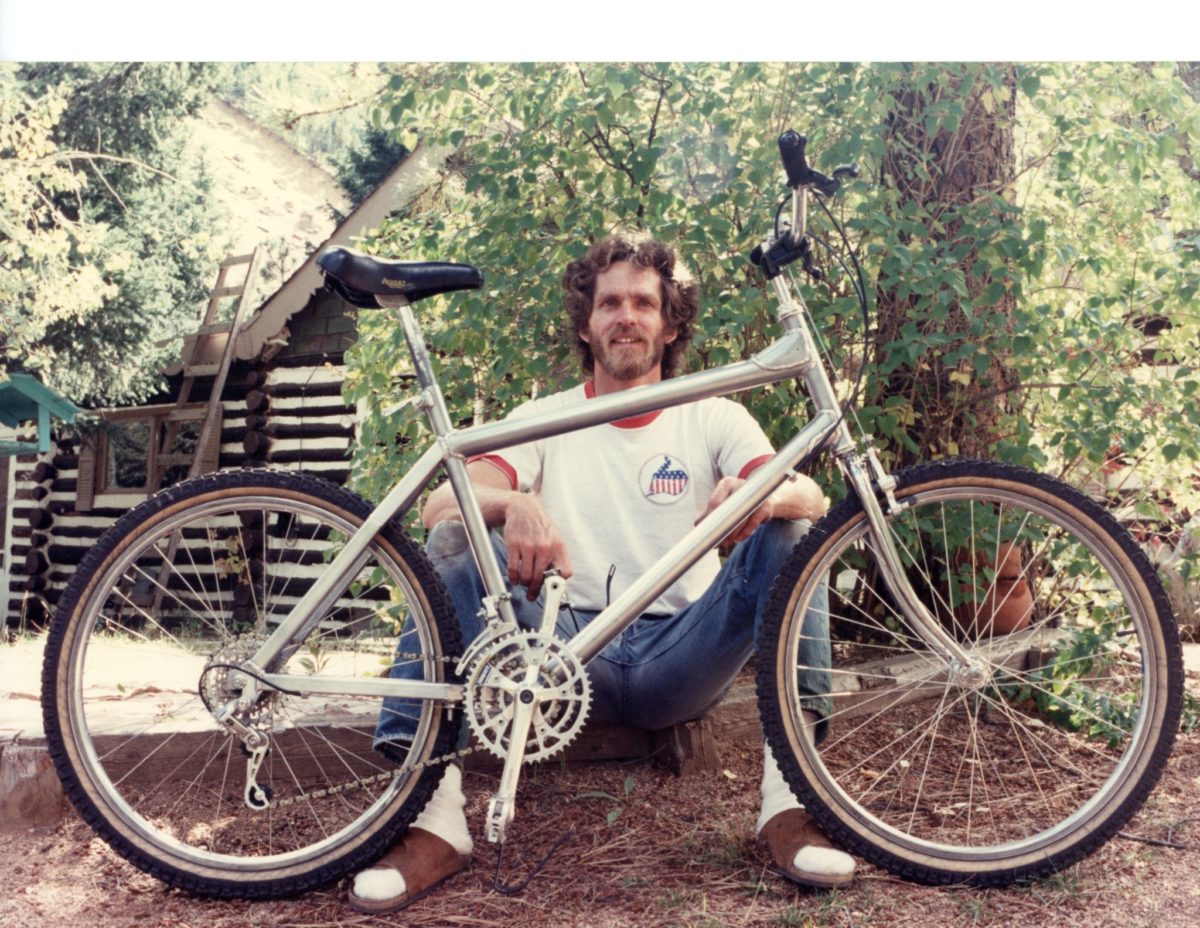
Doug with his second bike in February 1987
Doug believed that people approached design from two basic camp, guys like Ritchey and Fisher who were mainly CA roadies, and had no idea what the geometry of an off road bike was supposed to be. Instead they went with slack angles, short top tubes and long chainstays for high speed stability. The other camp were the MC guys, high speed, observed trials. In his opinion the geometry of a trials bike lent itself really well to mountain bikes. The trails he was riding in CO were intense single track, so he built the bikes for the trails out there. Hence the long top tubes, short chainstays, raising the front end a bit. This is another reason for Aluminum, couldn’t get long enough top tubes in steel. Wanted something over 22” and could only get that in Aluminum. He ended up buying 12’ tubes and cutting them to length. Felt a 24” top tube with a 70 degree seat tube was a good sweet spot.
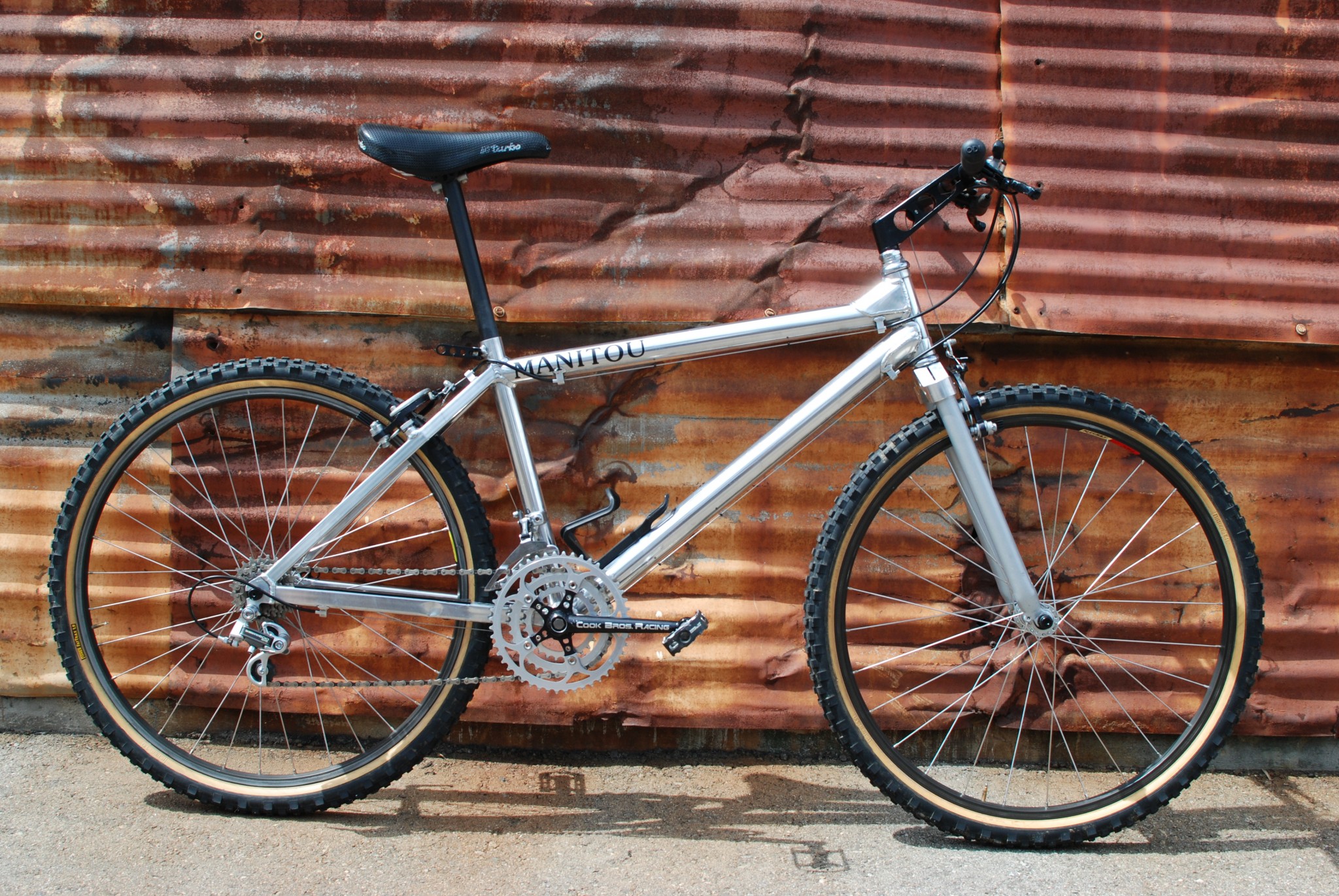
Between 1987 and 1992 Doug was building 25-35 bikes a year. The total number built was 318 with approximately 62 full suspension frames. During that time he had 1-2 people in the shop, one guy doing some welding and another general shop help. He contracted out to some part time home CNC machinists who worked for the Aerospace industry to make stems, fork pieces, etc.
Around 1988 he started building his own straight blade forks with the intention of improving on the unicrown design. Again the goal was to increase stiffness and keep the bike going where the rider pointed it. The design was basic and took queues
He was surprised that nobody had developed a suspension fork until then. Wanted to wait until someone in the pro-ranks riding a suspension fork he’d jump into it. He saw Overened and Herbold on a Rock Shox late in 89. That winter he started work on the early suspension fork. Design came from F1, which at the time was around 2” and used elastomers. Wanted something easy to maintain. He didn’t like how much the RS-1 jacked up the crown. He limited the travel to 1.25-1.5” on purpose to maintain the geometry and keep the flex down (1.25” tubing).
Manitou Catalogs
The following is a collection of catalogs and brochures released by Doug to document the bikes and forks built under his personal brand before the transition to the Answer brand
The early years of Doug’s production was marked by frequent design changes and improvements which were at most common among a few bikes made in a ‘production’ run. Closer to 1989/90 the design stabilized somewhat and the bikes were far more similar. The following section is a list of bikes I’ve built over the years which I have been able to confirm the build dates for. I hope this help you see the development of the design over the years and maybe help you date your Manitou.
1988 Manitou HT
While 1987 was really the first year that Doug made bikes for sale, 1988 was the first year that his bikes started taking a consistent shape and began following a similar formula. He was still in the early phases of implementing his wide spaced hubs and the frame construction was evolving to accommodate those features. By this time Manitous were square in the mountain bike category as opposed to modified trials bikes. Long top tubes and his signature straight blade composite forks started to be the norm.
1989 Manitou HT
Doug’s early bikes were simple at first glance but a closer look reveals a forward thinking design packed full of innovative features. By 1989 his design was fairly flushed out with wide hub spacing and the custom stem becoming standard features and early iterations of his suspension forks becoming available. By now Doug’s bikes adopted the fuselage concept which meant that stores could easily build them for customers giving him a wider market.
1990 Manitou HT
All Manitous are visually striking, but none more so than a fully rigid model. These bikes look fast just standing still and when moving they’re full on blur.
1991 Manitou HT
Following Juli Furtado’s and John Tomac’s performances at the 1990 World Championships Doug’s Manitou forks were firmly established as the must have product for 1991. Doug continued to refine the design of both the forks and his bikes and in 1991 he entered into a relationship with Easton and started making bikes using their new Vari Lite 7005 series alloy. The following bike was one of the first built under this partnership and was featured in Mountain Bike Action.
1992 Manitou HT
The 1992/93 Manitou HT was the final evolution of Doug’s design. While it still retained many of his original touches and design elements it was a far cry from the early bikes in terms of materials, construction and overall execution. While these bike have a reputation for cracking (something not uncommon for ultralight Aluminum bike sof the time) they were designed to be uncompromising race bikes not intended to last decades.
1991 Manitou FS Prototype
The 1990s were to the development of full suspension mountain bikes like the 1850s were to the gold rush. Every manufacturer was trying to get on the board and there were many memorable designs made during those early days, most for all the wrong reasons. Although Manitou bikes were not a household name, Doug’s new FS design quickly became one of the hottest bikes on the market and went on to become arguably the most recognizable FS design of the 90s.
1992 Manitou FS
Doug rocked the industry again in 1991 when he introduced his first full suspension bike at the Interbike show that year. Rather than follow emerging industry trends, what few there were, Doug adapted his race proven fork to replace the seat stays of the bike which made for a very unique design. That design went on to win multiple world cup racs and was licensed to multiple brands including Marin and remained in production until the mid 90s.
Completed Projects:
Current Projects:
Newsletter sign up:
Subscribe to our newsletter to receive info on our latest projects and new podcast releases

